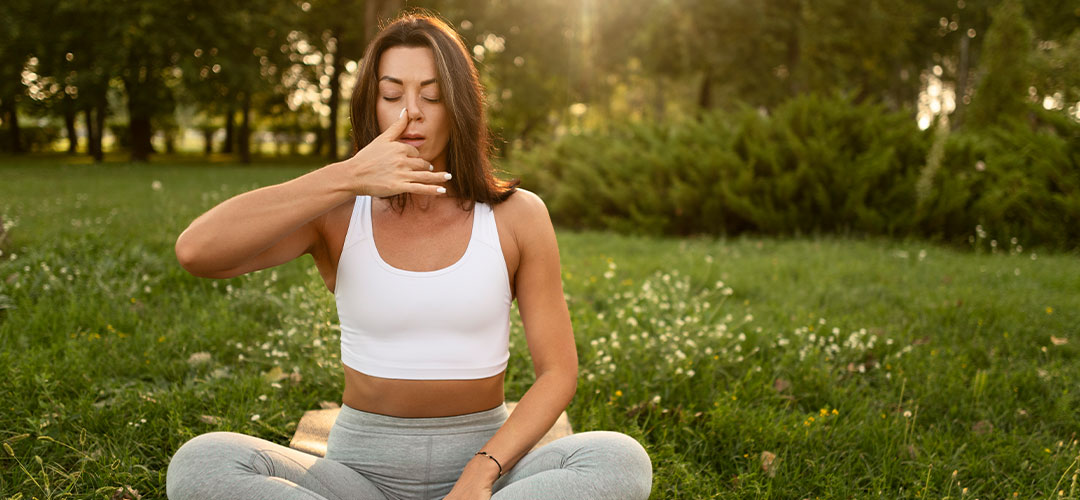
In recent years, breathwork techniques have surged in popularity across the UK wellness scene, and for good reason.
Rooted in ancient practices and backed by emerging science, conscious breathing is proving to be a powerful tool for improving both mental clarity and physical wellbeing. Whether you’re managing stress, enhancing athletic performance, or simply seeking a daily dose of calm, breathwork offers a simple yet profound way to reconnect with your body and mind.
In this guide, we explore the benefits of breathwork, and share easy breathing exercises you can try at home, no equipment or experience needed.
What Is Breathwork?
Breathwork refers to a range of controlled breathing techniques designed to influence your physical, mental, and emotional state. Unlike automatic breathing, conscious breathwork involves altering the rate, depth, and pattern of your breath to stimulate specific responses in the body.
From yogic pranayama to modern methods like the Wim Hof Technique and Buteyko breathing, breathwork is now widely practised across wellness communities in the UK as a natural way to regulate stress, boost energy, and support healing.
The Benefits of Breathwork
Regular practice of breathwork techniques can deliver an impressive range of health benefits, including:
- Reduced stress and anxiety: Slow, diaphragmatic breathing activates the parasympathetic nervous system, helping to calm the body and reduce cortisol levels.
- Improved focus and mental clarity: Oxygenating the brain through controlled breath can enhance concentration, memory, and alertness.
- Better sleep quality: Evening breathwork helps slow a racing mind and prepares the body for restful sleep.
- Enhanced immune function: Some techniques may stimulate lymphatic drainage and improve resilience to illness.
- Increased physical performance: Breath control can improve stamina, endurance, and post-exercise recovery.
- Lower blood pressure and heart rate: Deep breathing helps regulate the cardiovascular system and promotes long-term heart health.
For those looking to explore natural ways to manage mental health, breathing exercises for anxiety and stress are becoming a popular and accessible self-care tool.
Top 5 Breathwork Techniques to Try
Here are five beginner-friendly breathwork techniques, practitioners frequently recommend to improve both mental and physical health:
1. Box Breathing (Square Breathing)
Best for: Stress relief, focus, and calming the nervous system.
How to do it:
- Inhale through your nose for 4 counts
- Hold your breath for 4 counts
- Exhale through your mouth for 4 counts
- Hold again for 4 counts
- Repeat for 4–5 minutes.
This method is often used by athletes, military personnel, and high-performance professionals to quickly regain control in stressful situations.
2. 4-7-8 Breathing
Best for: Sleep, anxiety, and emotional regulation.
How to do it:
- Inhale through your nose for 4 seconds
- Hold your breath for 7 seconds
- Exhale slowly through your mouth for 8 seconds
- Repeat for 4–6 rounds.
This relaxing pattern helps activate the vagus nerve, signalling the body to enter a state of rest and digest.
3. Alternate Nostril Breathing (Nadi Shodhana)
Best for: Balancing energy, improving focus, and reducing mental clutter.
How to do it:
- Use your right thumb to close your right nostril
- Inhale through your left nostril
- Close your left nostril with your ring finger
- Exhale through the right nostril
- Inhale through the right nostril, then switch and exhale left
- Repeat for 2–5 minutes.
Practised regularly, this technique supports clarity, emotional balance, and improved respiratory function.
4. Coherent Breathing
Best for: Heart rate variability, blood pressure, and resilience.
How to do it:
- Breathe in for 5 seconds
- Breathe out for 5 seconds
- Repeat this 5:5 rhythm continuously for 10–20 minutes.
The goal is to align breath and heart rate, which can lead to a profound sense of wellbeing and calm.
5. Wim Hof Method (WHM) Breathing
Best for: Energy, immune support, and resilience to cold exposure.
How to do it:
- Take 30–40 deep breaths in and out (not forceful exhalations)
- After the last exhale, hold your breath for as long as comfortable
- Inhale deeply and hold for 10–15 seconds
- Repeat for 3–4 rounds.
Note: This should be practised sitting or lying down. Avoid if you’re pregnant or have heart or respiratory conditions unless supervised.
The WHM has become one of the most talked-about breathing exercises for mental health and vitality, especially among biohacking and cold therapy enthusiasts.
Who Can Benefit from Breathwork?
Breathwork is safe and accessible for most people and can be adapted to suit different health goals, ages, and fitness levels. It’s especially helpful for:
- People over 50 seeking natural support for brain and cardiovascular health
- Individuals with high-stress lifestyles or burnout symptoms
- Athletes looking to improve performance and recovery
- Those living with anxiety, depression, or PTSD (under professional guidance)
Pairing breathwork with regular physical activity enhances the benefits further. If you're over 50 and exploring ways to stay active, check out our guide to fitness for over 50s to get started with safe and effective exercises that complement your breathing practice.
How to Get Started with Breathwork
You don’t need any fancy gear to begin, just a quiet space and a few minutes of time. For those who prefer guided sessions, there are excellent apps like Breathwrk, Insight Timer, or Headspace and growing numbers of breathwork instructors across the UK offering in-person and online classes.
Start with 5–10 minutes a day, and gradually build your practice as it becomes a natural part of your wellness routine.
Final Thoughts: Harness the Power of Your Breath
Breathwork is one of the simplest and most effective tools for improving your physical and mental health. Whether you’re battling stress, improving sleep, boosting immunity, or sharpening your mind, consistent breathwork practice can make a measurable difference.
Ready to take a deeper breath and reclaim your vitality? Begin with just one of the techniques above and feel the transformation, one inhale at a time.
Disclaimer:
Information and other content provided in Lily & Loaf blogs should not be construed as medical advice and should not be considered a substitute for professional medical expertise. If you have any medical concerns, you should consult with your health care provider.







